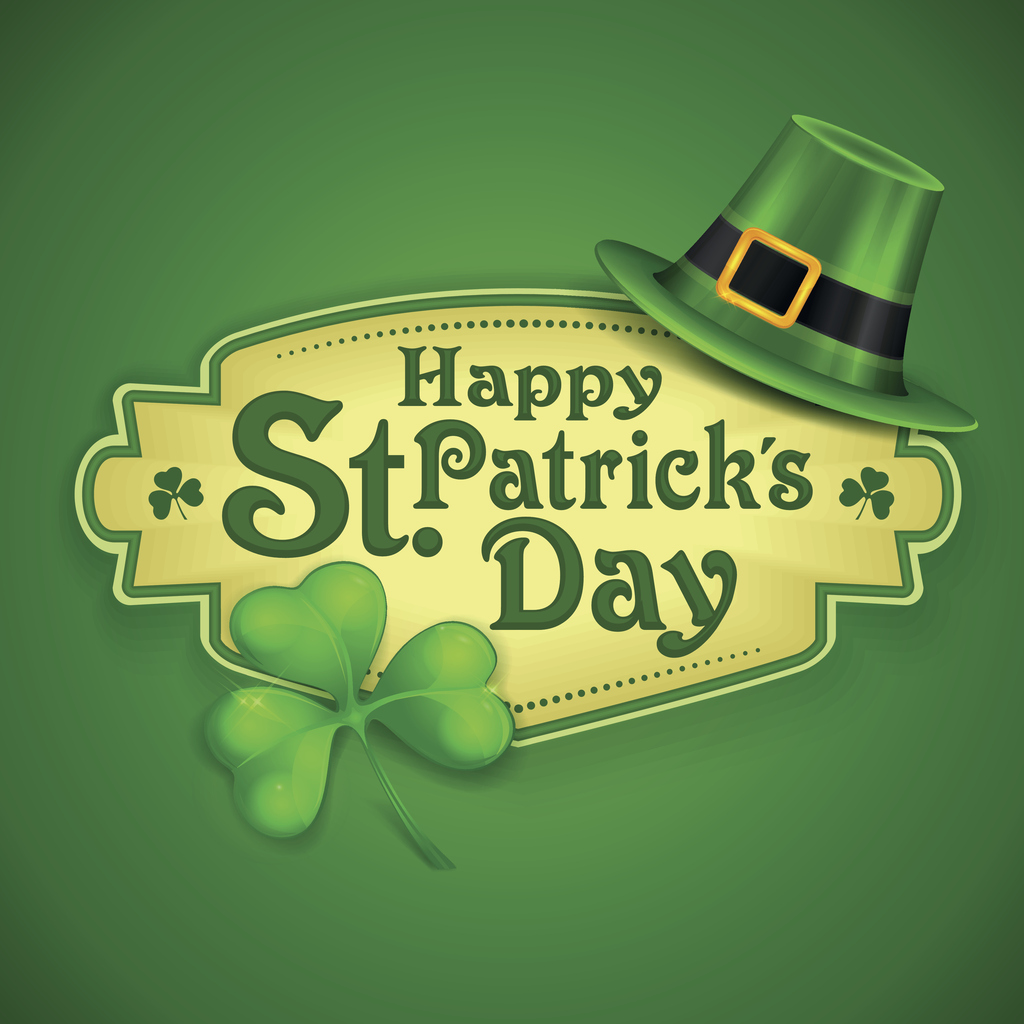St. Patrick's Day is a jubilant global festival honoring Ireland's patron saint, Saint Patrick. Celebrated with parades, green clothing, traditional Irish music, and delicious cuisine, this annual event on March 17th not only remembers Saint Patrick's legacy but also embraces the vibrant culture and heritage of Ireland. This day is a time for everyone, whether Irish by birth or spirit, to revel in the festivities.
The roots of St. Patrick's Day trace back to the early days of Christianity in Ireland. Over centuries, it has transformed from a solemn religious feast into a worldwide celebration of Irish pride and identity. Whether you're curious about its origins or eager to learn more about its traditions, this guide offers a comprehensive look into the holiday's rich history and global significance.
As we delve deeper into this article, you'll uncover the fascinating history behind St. Patrick's Day, explore its cherished traditions, and understand why it has become a beloved global event. Whether you're seeking historical insights or practical tips for celebrating, this guide will provide all the information you need to appreciate this vibrant celebration.
Read also:Exploring The Mystique Of The October 2023 Full Moon A Celestial Journey
Table of Contents
- The Rich History of St. Patrick's Day
- Timeless St. Patrick's Day Traditions
- Worldwide Parades Celebrating St. Patrick's Day
- Iconic Symbols of St. Patrick's Day
- Delicious Traditional Irish Cuisine
- The Magic of Irish Music and Dance
- Modern Takes on St. Patrick's Day Celebrations
- The Global Influence of St. Patrick's Day
- Intriguing Facts About St. Patrick's Day
- Conclusion and Call to Action
The Rich History of St. Patrick's Day
St. Patrick's Day began as a religious observance in honor of Saint Patrick, the revered patron saint of Ireland. Born in Roman Britain during the late 4th century, Patrick was abducted by Irish raiders at the age of 16 and taken to Ireland as a slave. During his captivity, he found solace in Christianity, which later inspired him to return to Ireland as a missionary. He dedicated his life to spreading Christianity throughout the island, leaving an indelible mark on Irish history.
March 17th marks the date of Saint Patrick's death, and over the years, this day evolved into a feast day in the Catholic Church. Initially celebrated only in Ireland, St. Patrick's Day gained worldwide recognition, particularly among Irish immigrants and their descendants, who carried the traditions to new lands.
Significance in Irish Culture
In Irish culture, St. Patrick's Day represents more than just a celebration of Saint Patrick. It symbolizes the resilience, faith, and unity of the Irish people. This holiday provides an opportunity to reflect on Ireland's storied history and cultural heritage while embracing the vibrant spirit of the nation. It's a day to celebrate Irish identity and the enduring influence of its traditions.
Timeless St. Patrick's Day Traditions
St. Patrick's Day is steeped in traditions that have been cherished and passed down through generations. From wearing green to enjoying lively Irish music and dance, these customs are integral to the holiday's spirit and charm.
Wearing Green
- Green, the color most closely associated with St. Patrick's Day, represents Ireland's lush landscapes and national identity. It is a vibrant symbol of the Emerald Isle's pride and beauty.
- Traditionally, people wear green to avoid being pinched by their peers, a playful custom that originated in the United States and has since become a beloved part of the celebration.
Attending Mass
For many Irish Catholics, attending Mass on St. Patrick's Day is a deeply spiritual tradition. The holiday serves as a reminder of its religious roots and Saint Patrick's profound impact on Irish Christianity. It is a time for reflection and gratitude, connecting individuals with their faith and cultural heritage.
Worldwide Parades Celebrating St. Patrick's Day
One of the most iconic features of St. Patrick's Day is the vibrant parades that take place in cities around the world. These parades showcase Irish culture, music, and dance, drawing large crowds of enthusiastic participants and spectators who come together to celebrate this special occasion.
Read also:Megan Good A Journey Through Her Romantic Life And Career
New York City Parade
The New York City St. Patrick's Day Parade is one of the largest and oldest parades globally. Established in 1762, it attracts millions of viewers annually and features marching bands, floats, and traditional Irish performers. This parade is a testament to the enduring popularity and cultural significance of St. Patrick's Day.
Iconic Symbols of St. Patrick's Day
St. Patrick's Day is rich in symbolism, with each icon carrying deep cultural and historical meaning. These symbols play a crucial role in shaping the holiday's identity and traditions.
Shamrock
The shamrock, a three-leaf clover, is perhaps the most recognizable symbol of St. Patrick's Day. According to legend, Saint Patrick used the shamrock to explain the Holy Trinity to the Irish people, making it a powerful emblem of Irish Christianity and unity.
Leprechauns
Leprechauns, mythical creatures from Irish folklore, are often depicted as mischievous little men with pots of gold at the end of rainbows. Though not directly related to Saint Patrick, leprechauns have become synonymous with Irish culture and St. Patrick's Day celebrations, adding an element of whimsy and fun to the festivities.
Delicious Traditional Irish Cuisine
No St. Patrick's Day celebration is complete without indulging in traditional Irish cuisine. From hearty stews to rich desserts, these dishes offer a taste of Ireland's culinary heritage and provide a delightful way to honor the occasion.
Corned Beef and Cabbage
Corned beef and cabbage is a classic St. Patrick's Day dish, particularly popular in the United States. Though not traditionally Irish, this meal has become a staple of the holiday, often served with potatoes and carrots. Its flavorful combination of ingredients makes it a favorite among celebrants worldwide.
Irish Soda Bread
Irish soda bread is a simple yet delicious bread made with flour, buttermilk, baking soda, and salt. It is often enjoyed with butter or served alongside soups and stews during St. Patrick's Day feasts. Its rich, comforting flavor perfectly complements the holiday's festive atmosphere.
The Magic of Irish Music and Dance
Music and dance are essential elements of St. Patrick's Day celebrations. Traditional Irish music, characterized by lively tunes and rhythmic beats, creates an energetic atmosphere that captivates audiences worldwide. These performances bring the spirit of Ireland to life, uniting people through shared joy and cultural appreciation.
Traditional Instruments
- Irish music is often performed using instruments such as the fiddle, tin whistle, bodhrán, and uilleann pipes. Each instrument contributes to the unique sound that defines Irish music and connects listeners to its rich traditions.
- These instruments produce a distinctive sound that is instantly recognizable and deeply rooted in Irish heritage, making them an integral part of St. Patrick's Day celebrations.
Modern Takes on St. Patrick's Day Celebrations
In recent years, St. Patrick's Day has embraced modern twists and innovations, appealing to diverse audiences and cultures. Cities around the world have incorporated creative ideas into their celebrations, ensuring that the holiday remains fresh and exciting for all participants.
Green Landmarks
From the Sydney Opera House to the Eiffel Tower, iconic landmarks are illuminated in green to celebrate St. Patrick's Day. This global phenomenon highlights the universal appeal of the holiday and its ability to unite people from all walks of life in a shared celebration of Irish culture.
The Global Influence of St. Patrick's Day
St. Patrick's Day has transcended its Irish origins to become a truly global celebration. Whether in Dublin, Tokyo, or Buenos Aires, people from all backgrounds come together to honor Irish culture and traditions. The holiday's universal charm lies in its ability to bring people together, fostering a sense of community and cultural appreciation.
International Participation
Countries such as the United States, Canada, Australia, and the United Kingdom have embraced St. Patrick's Day with enthusiasm, hosting parades, festivals, and cultural events that showcase the vibrancy of Irish heritage. These celebrations highlight the global reach and influence of the holiday, proving its enduring popularity across continents.
Intriguing Facts About St. Patrick's Day
Here are some fascinating facts about St. Patrick's Day that you may not know:
- Contrary to popular belief, Saint Patrick was not Irish by birth; he was born in Roman Britain.
- Blue, not green, was the original color associated with St. Patrick's Day. Over time, green became the iconic color due to its association with Ireland's lush landscapes.
- The first St. Patrick's Day parade was held in New York City in 1762, marking the beginning of the holiday's global transformation.
- Approximately 13 million pints of Guinness are consumed worldwide on St. Patrick's Day, making it one of the most popular beverages during the celebration.
Conclusion and Call to Action
St. Patrick's Day is a celebration of Irish culture, history, and identity that resonates with people across the globe. From its origins as a religious feast day to its current status as a global phenomenon, the holiday has evolved while preserving its core values of unity, faith, and pride. It is a time to honor the enduring spirit of Ireland and the cultural traditions that make this day so special.
As you prepare to celebrate St. Patrick's Day, take a moment to appreciate the rich traditions and symbols that define this holiday. Whether you're attending a parade, enjoying traditional Irish food, or simply wearing green, you're participating in a celebration that honors the vibrant spirit of Ireland. We encourage you to share your thoughts and experiences in the comments below. Have you attended a St. Patrick's Day parade? What is your favorite Irish dish? Let us know, and don't forget to explore our other articles for more insights into global traditions and cultures.
References:
- History.com Editors. "St. Patrick's Day." HISTORY, A&E Television Networks, 2009, www.history.com/topics/st-patricks-day/st-patricks-day-history.
- IrishCentral. "10 Fascinating Facts About St Patrick's Day You Probably Didn't Know." IrishCentral, 14 Mar. 2023, www.irishcentral.com/heritage/history/facts-about-st-patricks-day.


